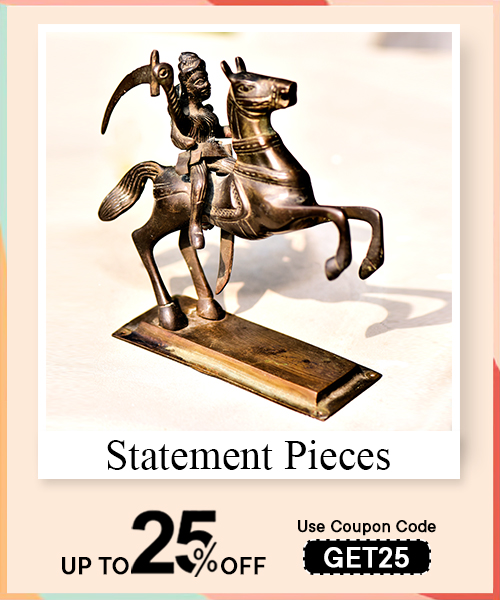Dussehra is a festival that marks the victory of good over evil forces prevailing in the form of Ravana. The festival marks the end of the holy fasting period of Navratri, or nine nights.
People share Dussehra images and videos to convey their message. Similarly, they perform several rituals during the period to please Lord Vishnu.
Dussehra is a Sanskrit word that means dasha or ten, and Hara implies defeat. It signifies the end of the demon king Ravana and his brothers. Since the demon king had ten heads, he couldn't be trounced. However, Lord Rama, an avatar of Lord Vishnu, and his brother Lakshmana ended his evil methods and laid the foundation for the triumph of good in every battle.
When is Dussehra 2024?
According to Hindu ceremonies, the Dussehra festival is observed on the tenth day of Ashwin (which often overlaps between September and October). Dussehra is observed with great zeal and enthusiasm across India. It typically involves the performance of religious rituals, reenactments of the stories through dramatic plays called Ram Lila and Durga Puja, and the burning of effigies representing Ravana and his evil brothers.
Dussehra 2024 will be observed on the 12th day of October.The Dussehra 2024 date falls on Saturday.
Read More : DURGA PUJA 2024 DATES, CALENDAR & CELEBRATIONS
There are several reasons why we celebrate Dussehra:
According to the Ramayana, Lord Rama embarked on a journey to rescue his wife, Sita, who had been kidnapped by the demon king Ravana. After a fierce battle that lasted for ten days, Lord Rama ultimately defeated Ravana on the tenth day, which is celebrated as Dussehra. The victory of Lord Rama symbolises the triumph of truth and justice over the forces of evil.
The story of Mahishasura involves the buffalo demon, who acquired immense power through his devotion to Lord Brahma. Mahishasura unleashed terror on the gods and goddesses, and they combined their powers to create the divine goddess Durga. Equipped with their divine weapons and riding a lion, Goddess Durga fought a fierce battle against Mahishasura for nine nights. On the tenth day, she defeated the demon, marking the victory of good over evil.

The history of Dussehra dates back to ancient times and is rooted in various historical events and cultural practices
- The Vijayanagara Empire in the South was the establishment of the Vijayanagara Empire. In the 14th century, the Vijayanagara kings initiated grand celebrations to commemorate victories over rival kingdoms. These celebrations lasted nine nights, culminating on the tenth day, Vijayadashami, or Dussehra. The festival became a prominent occasion for showcasing the empire's cultural richness.
- Another historical connection can be traced to the Mughal era in India. Emperor Akbar introduced the tradition of Navaratri, a nine-night festival dedicated to worshipping Goddess Durga, during his reign. This celebration gained popularity among the Mughal rulers and eventually merged with the Dussehra festivities.
- Similarly, Dussehra is associated with the legendary king Raja Ramchandra of Kullu in the Himachal Pradesh region of India. In the 17th century, Raja Ramchandra started the tradition of holding a grand Dussehra celebration to seek the blessings of the deities for a prosperous harvest and the overall well-being of his kingdom. The Kullu Dussehra, known for its vibrant processions and cultural performances, continues to be one of India's most renowned Dussehra celebrations.
Read More : 10 INSTAGRAM-WORTHY DURGA PUJA PANDALS IN INDIA
Here are several rituals that are perfect for the Dussehra 2024 date -
On Dussehra, rituals are performed, especially during the Aparahna time. These include Shami, Aparajita Poojas, and Seema Avalanghan. Further, you can opt to participate in the burning of Ravana's effigies. Such effigies symbolise the destruction of evil and the restoration of peace. Since the day also signifies the end of the Durga festival, the Durga idol is often immersed in water. Again, this signifies the departure of the Goddess, restoring peace and overcoming evil.
Similarly, the Northern regions enact the epic “Ramayana” as a great play. Here, artists play different characters and then put an end to the effigy of the three brothers: Ravana, Kumbhkaran, and Meghanath. In the eastern states of the nation, including Bihar and Orissa, folk songs are played and the epic is retold. The Vijayadashami celebrations in Himachal Pradesh are recognised internationally by the state government.
Ravana was known for his ego and arrogance, ultimately leading to his downfall. Dussehra teaches us the significance of humility and the need to eliminate ego and pride from our lives. It reminds us to stay grounded and not let success or power corrupt our values. Burning the effigy symbolises the destruction of evil and negative forces. It teaches us to identify and eliminate negativity, promoting personal growth and spiritual well-being.
Ganga Dussehra, or Ganga Dashami, is observed on the tenth day (Dashami) of the Shukla Paksha Hindu month of Jyeshtha. The festival marks the descent of the sacred river Ganga onto Earth from the holy hair of Lord Shiva. The festival holds immense cultural and religious importance, as it honours this divine river that is considered the lifeline of millions of people. Hindu mythology also finds it an embodiment of purity, divinity, and spirituality.
Read More : HAPPY DIWALI 2024: BEST WISHES, IMAGES, AND MESSAGES TO SHARE WITH YOUR LOVED ONES ON DEEPAVALI
According to ancient legends, Devi Ganga descended from the heavens to cleanse the sins of humanity on the day of Ganga Dussehra. Bathing in the holy river is believed to help people eliminate their sins and bring about spiritual growth and development. On the auspicious day of Ganga Dussehra, devotees gather on the banks of the Ganges and offer prayers, perform rituals, and take holy dips in the river to seek blessings and purification. Cultural events, processions, and fairs are organised to celebrate the occasion. People dress in traditional attire, sing devotional songs, and participate in dance performances to express their joy and devotion towards the river Ganga. The entire atmosphere is filled with a sense of spiritual enthusiasm and dedication.
Ganga Dussehra reminds us to preserve and protect our environment. The Ganges, considered sacred, is facing severe pollution challenges. This festival calls for awareness to keep the river and surroundings clean and pollution-free. Many environmental initiatives and cleanliness drives are organised to promote the cause.
Ganga Dussehra will be observed nationwide on June 16, 2024.
Kullu Dussehra is another form of the vibrant and enchanting Dussehra festival celebrated in the Kullu Valley of Himachal Pradesh. Kullu Dussehra is a grand celebration that attracts thousands of devotees and tourists annually. Its origin is believed to be in ancient mythology and folklore, and these week-long festival celebrations showcase the region's rich cultural heritage and religious fervour.
Kullu Dussehra marks the end of the traditional Dussehra festival observed in northern India. However, what sets it apart is the uniqueness of its celebrations. The festival is believed to have originated in the 17th century when local deities were invited to witness the festivities in Kullu.
The highlight of this version of Dussehra is the grand procession, locally known as "Rath Yatra," which takes place on the final day. The procession features beautifully decorated palanquins carrying idols of deities from various regional temples. These deities are believed to be the protectors of the valley and are well-loved by the locals.
Traditional music and dance troupes accompany the palanquins, and enthusiastic participants dress in colourful attire. This results in week-long Dussehra holidays in the region.
During the Kullu Dussehra, the procession winds its way through the streets of Kullu town. The atmosphere is filled with religious chants and drum beats, and the city comes alive with energy and devotion. The festival also showcases the legendary battle between Lord Rama and the demon king Ravana, symbolising the victory of good over evil. Memorable tableaux and dramas are performed, depicting various episodes from the Ramayana, and special theatre artists display their flair.
The week-long festival also allows local artisans and craftsmen to display their skills. The festival hosts a vibrant fair where one can find unmatched versions of traditional handicrafts, local delights, and traditional handlooms.
Read More : THE HISTORY AND SIGNIFICANCE OF DURGA PUJA CELEBRATIONS
The 2024 Dussehra dates for Kullu Dussehra are 15 October.















